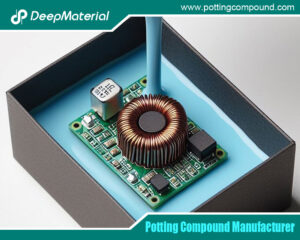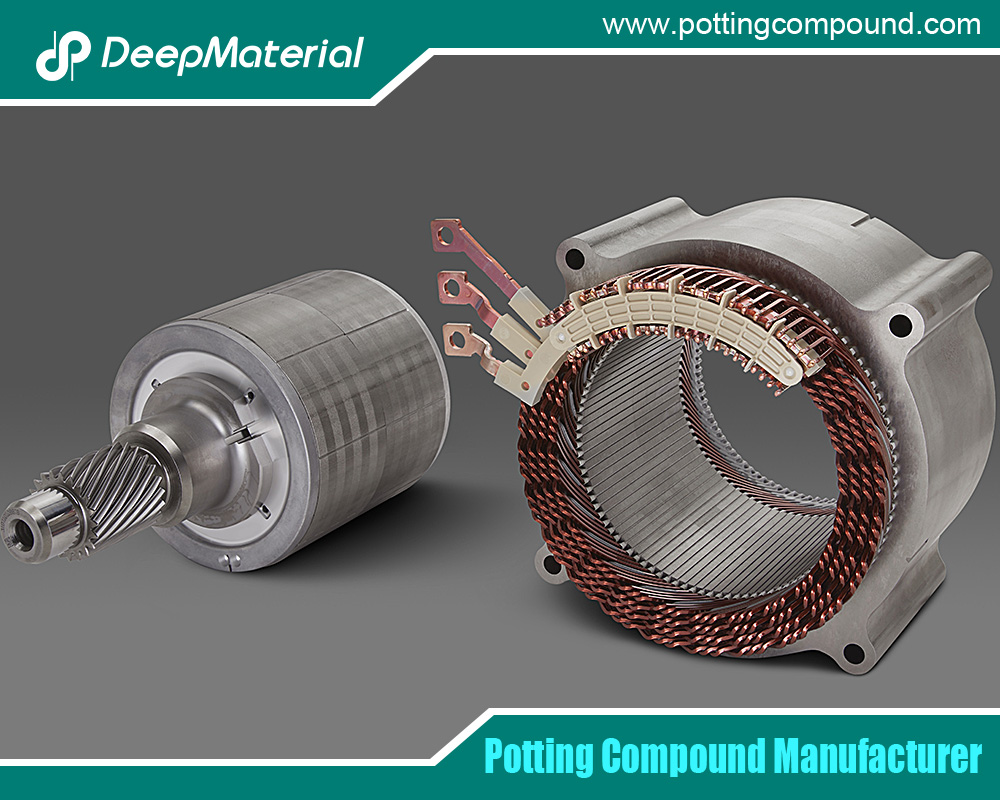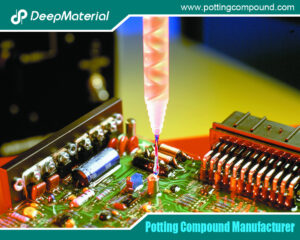

Automatic Fire Suppression Material: An Essential Component in Modern Fire Safety
- Electronic Potting Material Manufacturer
- September 20, 2024
- Automatic Fire Suppression Material, circuit board potting, conformal coating for electronics, conformal coating for pcb, conformal coating for pcb standards, conformal coating material, conformal coating silicone, conformal coating spray, conformal coating types, deepmaterial epoxy adhesive glue, deepmaterial PCB Potting, deepmaterial potting compound, electrical potting compound, electronic epoxy encapsulant potting compounds, epoxy potting compound, pcb potting, polyurethane potting compound, polyurethane potting compound for electronics, potting compound for electronics, potting compound for pcb, potting compound vs epoxy, potting material for electronic components, potting material for electronics, potting pcb, silicone potting compound for electronics, thermal potting compound, UV curing potting compound, waterproof potting compound, what is pcb potting
Automatic Fire Suppression Material: An Essential Component in Modern Fire Safety
Fire safety has evolved significantly over the years, with advancements in technology playing a crucial role in enhancing the effectiveness of fire prevention and suppression systems. One of the most critical innovations in this field is the development of automatic fire suppression materials. These materials are designed to detect and extinguish fires without human intervention, protecting environments where the fire risk is high or immediate human response may not be possible. This article explores the various types of automatic fire suppression materials, their applications, benefits, and the future of fire safety technology.
The Importance of Automatic Fire Suppression Systems
In any fire emergency, time is of the essence. The quicker a fire is detected and suppressed, the less damage it can cause. Traditional fire suppression systems, such as sprinklers or fire extinguishers, often rely on manual activation or external power sources. This dependence on human intervention or electricity can lead to delays in response, which can be catastrophic in critical situations.
Automatic fire suppression materials overcome these limitations by being self-activating. They are engineered to detect the presence of fire—typically through heat, smoke, or flame sensors—and respond immediately by releasing a fire-suppressing agent. This immediate response is crucial in preventing the spread of fire, minimizing damage to property, and, more importantly, saving lives.
Types of Automatic Fire Suppression Materials
Automatic fire suppression materials come in various forms, each designed for specific applications and environments. The choice of material depends on factors such as the type of fire risk, the environment in which the material will be used, and the potential impact on people and equipment. Below are some common types of automatic fire suppression materials:
Dry Chemical Agents
Dry chemical agents are among the most widely used types of fire suppression materials. These agents are typically stored in powder form and released when a fire is detected. The chemicals work by interrupting the fire’s chemical reaction, effectively smothering it. Common dry chemical agents include mono ammonium phosphate, potassium bicarbonate, and sodium bicarbonate.
Dry chemical agents are particularly effective in extinguishing Class A (ordinary combustibles), Class B (flammable liquids), and Class C (electrical) fires. They are commonly used in industrial settings, commercial kitchens, and other environments with combustible materials.
Gaseous Suppression Agents
Gaseous suppression agents, also known as clean agents, are ideal for environments where protecting sensitive equipment or electronics is crucial. These agents work by displacing oxygen or inhibiting the chemical reaction of the fire, thereby extinguishing it without leaving any residue. Common gaseous agents include FM-200 (HFC-227ea), Novec 1230, and carbon dioxide (CO2).
Gaseous suppression systems are frequently used in data centers, server rooms, museums, and archives, where water-based suppression methods could damage valuable assets.
Water Mist Systems
Water mist systems use fine droplets of water to suppress fires. The water mist cools the flame and surrounding gases, reducing the temperature and the heat transfer to the unburned fuel. Additionally, the water mist displaces oxygen in the fire zone, helping to smother the fire.
Water mist systems are effective in controlling Class A and Class B fires. They are often used in environments where traditional sprinkler systems are unsuitable, such as in areas with electrical equipment, historical buildings, or where water damage must be minimized.
Foam Suppression Agents
Foam suppression agents are commonly used in areas where flammable liquids are present. The foam forms a blanket over the burning liquid, cutting off the fire’s oxygen supply and preventing the release of flammable vapors. This type of suppression is highly effective for Class B fires involving flammable liquids and gases.
Foam suppression systems are typically found in chemical plants, refineries, aircraft hangars, and other industrial settings where large quantities of flammable liquids are stored.
Intumescent Materials
Intumescent materials are fireproofing substances that expand when exposed to heat. When a fire occurs, these materials swell to form an insulating barrier that slows the spread of flames and smoke. Intumescent materials are commonly used in construction, especially for protecting structural steel and other critical components.
These materials are not fire extinguishing but play a vital role in slowing the spread of fire, providing more time for occupants to evacuate and for fire suppression systems to activate.
Applications of Automatic Fire Suppression Materials
Automatic fire suppression materials are used in various applications across various industries. Their ability to provide immediate and effective fire suppression makes them invaluable when more than traditional fire protection methods may be required. Here are some critical applications:
Industrial Facilities
Industrial facilities, such as manufacturing plants, refineries, and chemical processing units, are often at high fire risk due to flammable materials, complex machinery, and continuous operations. Automatic fire suppression materials are critical in these environments to ensure that any fire outbreak is quickly contained, minimizing the risk of explosions, equipment damage, and loss of life.
For example, in a chemical plant, foam suppression systems can control fires involving flammable liquids, while dry chemical agents may be deployed to protect areas with electrical equipment.
Data Centers and Server Rooms
Data centers and server rooms house critical IT infrastructure, making fire protection a top priority. Traditional fire suppression methods, such as sprinklers, can cause significant damage to sensitive electronics. Gaseous suppression agents, like FM-200 or Novec 1230, are preferred in these environments because they can extinguish fires without damaging equipment or leaving a residue.
These systems are typically integrated with advanced fire detection systems to ensure rapid activation during a fire, protecting valuable data and minimizing downtime.
Commercial Kitchens
Commercial kitchens are prone to fires due to open flames, hot surfaces, and flammable cooking oils. Automatic fire suppression systems, often using wet chemical agents, are essential in these environments. These systems are designed to detect fires in cooking equipment and release a fire-suppressing agent that rapidly cools the flames and prevents re-ignition.
In addition to protecting property, these systems are critical for ensuring the safety of kitchen staff and patrons.
Vehicles and Transportation
Vehicles, especially those used in industries like mining, forestry, and aviation, are often equipped with automatic fire suppression systems. These systems are designed to detect and extinguish fires in engine compartments, fuel tanks, and other high-risk areas. Using fire suppression materials in vehicles is essential for preventing catastrophic fires that can lead to loss of life, significant property damage, and environmental contamination.
For instance, in aviation, aircraft are equipped with gaseous suppression systems to control fires in cargo holds, engine compartments, and other critical areas.
Historical Buildings and Museums
Preserving historic buildings and their valuable artifacts requires specialized fire protection solutions. Automatic fire suppression systems, particularly those using water mist or gaseous agents, are ideal for these environments. These systems provide adequate fire suppression while minimizing the risk of water damage to delicate structures and priceless items.
In museums, gaseous suppression systems are often used to protect exhibits, archives, and storage areas, ensuring that cultural heritage is preserved for future generations.
Advantages of Automatic Fire Suppression Materials
Adopting automatic fire suppression materials offers numerous advantages over traditional fire protection methods. These benefits make them an essential component of modern fire safety strategies:
Rapid Response
Automatic fire suppression materials are designed to activate immediately upon detecting a fire, ensuring a rapid response. This quick action is critical in controlling the fire before it can spread, reducing the potential for damage and saving lives.
Minimal Human Intervention
These systems operate independently, reducing the need for human intervention. This is particularly important in situations where there may be no personnel present or where the fire risk is high, such as in remote or hazardous locations.
Protection of Sensitive Equipment
In environments where traditional fire suppression methods could cause more harm than good, such as in data centers or museums, automatic fire suppression materials provide a safe and effective alternative. Gaseous suppression agents, for example, can extinguish fires without damaging sensitive electronics or valuable artifacts.
Versatility
Automatic fire suppression materials are available in various forms, allowing them to be tailored to specific fire risks and environments. Whether protecting a commercial kitchen, an industrial facility, or a historical building, a suitable fire suppression material is available.
Compliance with Safety Regulations
Using automatic fire suppression systems helps organizations comply with fire safety regulations and standards. This compliance is crucial for ensuring the safety of occupants, protecting property, and avoiding potential legal and financial penalties.
Challenges and Considerations
While automatic fire suppression materials offer significant benefits, there are also challenges and considerations to keep in mind when implementing these systems:
Cost
Installing and maintaining automatic fire suppression systems can be costly, particularly in large or complex environments. However, the potential savings regarding reduced fire damage and insurance premiums often outweigh these costs.
Maintenance Requirements
Automatic fire suppression systems require regular maintenance to ensure they function correctly when needed. This includes routine inspections, testing, and servicing to prevent system failures.
Environmental Impact
Some fire suppression materials, particularly gaseous agents, can have environmental impacts, such as contributing to global warming or ozone depletion. Therefore, it is essential to choose effective and environmentally friendly materials and comply with regulations governing the use of such substances.
Compatibility with Existing Systems
When retrofitting automatic fire suppression materials into existing buildings or systems, compatibility with the current infrastructure is essential. This may require modifications to the building or the fire suppression system itself.
The Future of Automatic Fire Suppression Technology
The field of fire suppression is continually evolving, with new materials and technologies being developed to enhance fire safety. Some of the emerging trends and future developments in automatic fire suppression include:
Smart Fire Suppression Systems
The integration of intelligent technology into fire suppression systems is a growing trend. These systems use advanced sensors, artificial intelligence (AI), and the Internet of Things (IoT) to detect fires more accurately and respond more effectively. For example, AI-powered systems can analyze fire risk data in real time, enabling predictive maintenance and early intervention.
Eco-Friendly Suppression Agents
As environmental concerns continue to rise, there is a growing focus on developing effective fire suppression materials with minimal environmental impact. This includes the development of new gaseous agents that do not deplete the ozone layer or contribute to global warming, as well as biodegradable or non-toxic chemical agents.
Hybrid Suppression Systems
Hybrid fire suppression systems, which combine multiple suppression methods (e.g., water mist and gaseous agents), are being developed to provide more comprehensive fire protection. These systems can be tailored to address specific fire risks and environments, offering enhanced security.
Advanced Fire Detection Technologies
Advancements in fire detection technologies will also be seen in the future of fire suppression. Improved sensors, drones, and AI-powered monitoring systems will enable faster and more accurate fire detection, ensuring that suppression systems are activated at the earliest possible stage.
Conclusion
Automatic fire suppression materials are a vital component of modern fire safety strategies. Their ability to detect and extinguish fires without human intervention makes them indispensable in environments with high fire risks or where traditional fire protection methods may need to be revised. As technology advances, we expect to see even more innovative and effective fire suppression materials to enhance safety further and protect lives and property. In an increasingly complex and interconnected world, the importance of reliable and efficient fire suppression cannot be overstated.
For more about choosing the top automatic fire suppression material: an essential component in modern fire safety, you can pay a visit to DeepMaterial at https://www.pottingcompound.com/ for more info.
Recent Posts
- Potting Compound vs. Epoxy: A Comprehensive Comparison
- Potting Compound for PCB
- In – depth Analysis of the Curing Characteristics of Electronic Potting Compounds
- A Comprehensive Analysis of the Environmental Performance of Encapsulating Materials: From Regulations to Practices
- A Comprehensive Analysis of PCB Encapsulation Quality Inspection: Innovative Application of Non-Destructive Testing Technologies
- Analysis of the Improvement of the Seismic and Impact Resistance Performance of PCB by Encapsulation
- A Comprehensive Guide to Evaluating the Reliability of Encapsulation Materials for Encapsulated PCBs
- In-depth Analysis of the Reparability of Encapsulation Materials
- A Comprehensive Analysis of Post-Potting PCB Issues and the Repair and Rework of Potting Materials
- A Comprehensive Analysis of the Compatibility between Encapsulation Materials and PCBs: Exploration of Chemical Reactions and Their Impact on Performance







